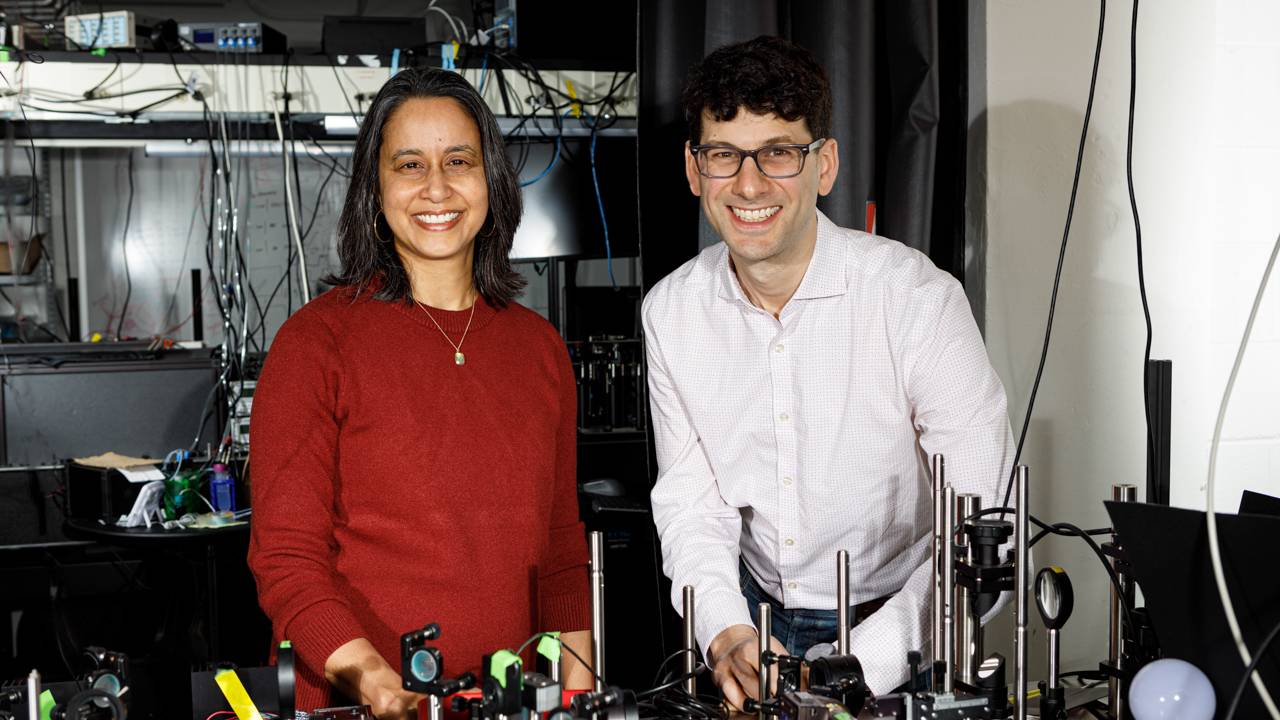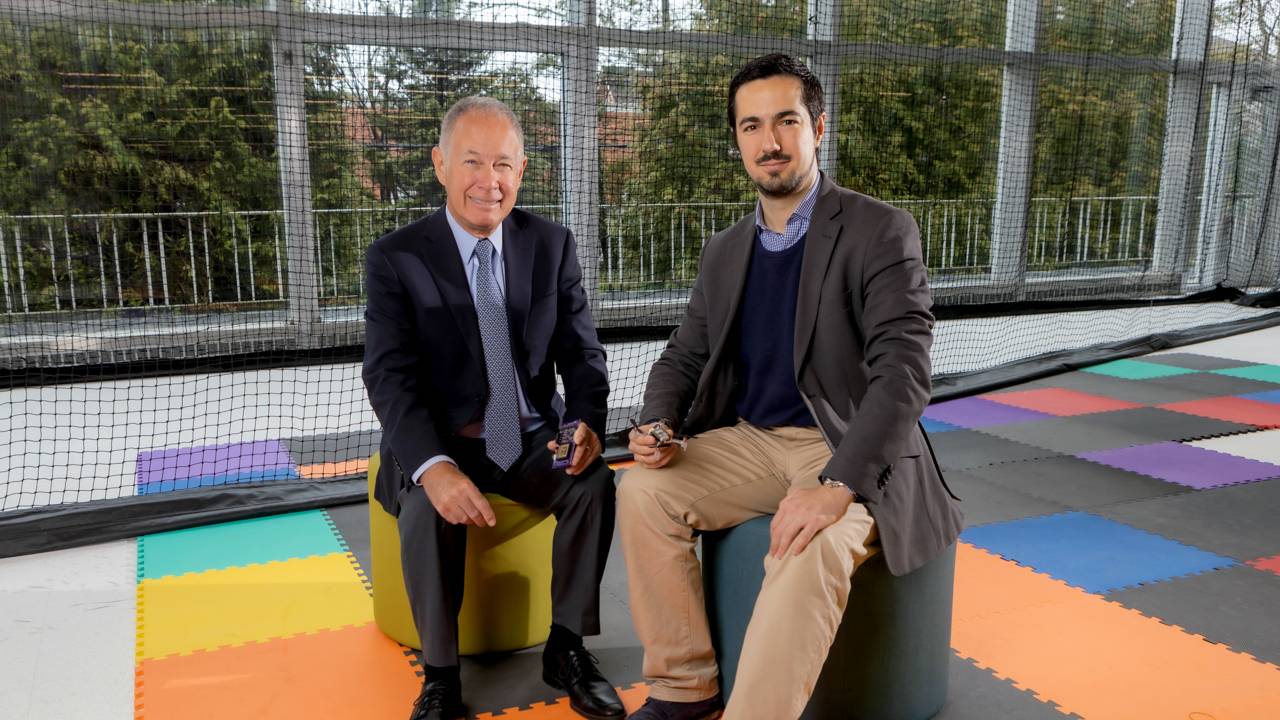Two projects - one that maps the function of the brain's neuronal network in unprecedented detail and another that combines robotics and light-based computer circuits to create safe self-driving vehicles - have been awarded funding through Princeton's Eric and Wendy Schmidt Transformative Technology Fund.
The fund aims to spur forward momentum in science or engineering through the creation of entirely new technologies that can have a major positive impact on a field of research. The fund supports projects of such exploratory nature that they are often considered too risky to qualify for funding from conventional sources such as government grants.
"Both of these projects brings together leading faculty across domains of expertise to collaborate on endeavors that, if successful, can dramatically advance what we know and what we can do," said Princeton University Dean for Research Peter Schiffer, professor of physics. "The Schmidt Fund's goal is truly embodied in these examples of how novel thinking and creative activity can aim toward transformational global impacts."
The fund was created in 2009 through a gift from Eric and Wendy Schmidt. Eric Schmidt is co-founder of Schmidt Sciences, The Schmidt Family Foundation, and Schmidt Ocean Institute, the former Chief Executive Officer of Google, and former Executive Chairman of Alphabet Inc., Google's parent company. Wendy Schmidt is co-founder of Schmidt Sciences, and president and co-founder of The Schmidt Family Foundation and Schmidt Ocean Institute. Eric Schmidt earned his bachelor's degree in electrical engineering from Princeton in 1976 and served as a Princeton Trustee from 2004 to 2008.
The two newly funded technologies are:
Technology to track brain-wide signals through new imaging system
- Mala Murthy, the Karol and Marnie Marcin '96 Professor, professor of neuroscience, and director of the Princeton Neuroscience Institute
- Andrew Leifer, assistant professor of physics and neuroscience

Mala Murthy (left) and Andrew Leifer (right) are using the whole-brain map of a fruit fly (top) to track perturbations from one neuron across all 130,000 neurons.
This project will provide the most detailed insights yet into how signals propagate through networks of neurons to give rise to brain function. Drawing on extensive previous studies of neural connections in worms by Leifer's team and fruit flies by Murthy's team, the two scientists and their teams will develop a system to create maps of functional connectivity that will shed light on how the brain controls activities such as decision making and movement.
With this new system, researchers can find out how perturbing one neuron affects the signals traveling through neural pathways across the entire 130,000-neuron fruit fly brain. Current technologies would require more than a year to conduct such a large study, so the team will develop a system that simultaneously stimulates groups of neurons and images them via a new method called light beads microscopy, combined with machine learning to decipher the network's responses. The technology will allow new discoveries in neuroscience, providing insights into how neural circuitry gives rise to behaviors.
Revolutionizing robot safety through photonic computing
- Paul Prucnal, professor of electrical and computer engineering
- Jaime Fernández Fisac, assistant professor of electrical and computer engineering

Self-driving cars and other robotic systems that depend on split-second decisions will be much safer when photon-driven computer chips developed by Paul Prucnal (left) are integrated into robotic systems developed by Jaime Fernández Fisac (right).
This project aims to enhance the safety and reliability of autonomous vehicles and robots using processors known as neuromorphic photonic chips, which work in a manner analogous to neurons and perform computations using light, or photons, rather than electrons.
By combining the photonic chips developed by Prucnal with robotic systems developed by Fisac, the researchers aim to build autonomous systems that can rapidly evaluate safety-critical situations, such as a bicycle veering into the vehicle's path, and choose the correct response, such as swerving to avoid a collision.
Compared to ordinary electronic processors, the neuromorphic photonic chips process information far more quickly, and can evaluate thousands of potential scenarios in real time, allowing the robot to choose the best contingency plan to avoid an accident. The approach will improve the safety of self-driving cars, delivery robots, and other autonomous systems whose safe operation may hinge on split-second decisions






